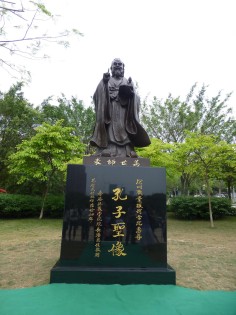Confucius returns to mainland, statue by statue
The heat was intense. As the speakers took the podium in the gardens of Shenzhen Polytechnic a young woman fainted.

The statue, donated and unveiled by 80-year-old Hong Kong businessman and billionaire Dr Tong Yun-kai, depicts the great sage Confucius with his hand raised in a traditional pose of teaching.
And as the students clustered around the statue, having their pictures taken in front of it, it seemed clear somehow that the earlier scene of two people fainting in the midday sun embodied everything Confucius taught: it emphasised the importance of ritual, the critical role of respect for authority and yet ultimately it showed the place for benevolence by those in control of events.
The unveiling of this icon represents a rather extraordinary cultural phenomenon on the mainland at the moment: the revival and rise of that particular philosophy known as Confucianism (although when Confucius taught the precepts, 2,500 years ago, they were already ancient, having been born in the Bronze Age or earlier).
"Fifteen years ago, nobody in China really mentioned Confucius," says Liu Hongyi, president of the Shenzhen Polytechnic. "Now Confucianism is culturally really important to so much we do."
All children in primary schools today learn written characters from Confucian texts and sayings; universities throughout the mainland have put Confucian studies onto the syllabus for both humanities and political studies. Around 500 Confucian temples have been built or rebuilt in China in the past couple of decades. And the government and politicians have begun to refer back as a matter of course to the great Confucian classics of the Shang Shu ( Most Venerable Book) and the Analects, about how to rule with benevolence and wisdom.